Llandrindod Wells, Powys, Wales, UK 作者: 来源: 发布时间:2021-09-17
I. Population and Area
Continent: Europe
Country: The U.K
State/Province: Wales
City/Town: Llandrindod Wells, Powys
Total Area: 2008 (sq mi) (Powys)
Population in 2011: 5.309 (thousand)

II. Natural Geography (environment and resources)
Location
Powys covers the historic counties of Montgomeryshire and Radnorshire, most of Brecknockshire (Breconshire), and a small part of Denbighshire. With an area of about 2,000 square miles (5,200 km2), it is the largest unitary authority in Wales by land area and about the same size as the country of Trinidad and Tobago. It is bounded to the north by Gwynedd, Denbighshire and Wrexham; to the west by Ceredigion and Carmarthenshire; to the east by Shropshire and Herefordshire; and to the south by Rhondda Cynon Taf, Merthyr Tydfil, Caerphilly, Blaenau Gwent, Monmouthshire and Neath Port Talbot.
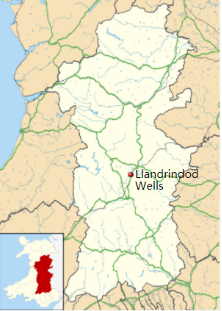
Human geography
The largest towns are Newtown, Ystradgynlais, Brecon, and Welshpool with populations in 2011 of 11,357, 8,092, 8,250 and 6,664 respectively. Powys has the lowest population density of all the principal areas of Wales. Most of Powys is mountainous and so north–south travel is difficult.
Just under a third of the residents have Welsh linguistic skills: Welsh speakers are concentrated mainly in the rural areas both in and around Machynlleth, Llanfyllin and Llanrhaeadr-ym-Mochnant (where William Morgan first translated the whole Bible into Welsh in 1588) in Montgomeryshire (Welsh: Sir Drefaldwyn), and the industrial area of Ystradgynlais in the southwest of Brecknockshire (Welsh: Sir Frycheiniog). Radnorshire (Welsh: Sir Faesyfed) was almost completely Anglicised by the end of the 18th century. The 2001 census records show 21% of the population of Powys were able to speak Welsh at that time, the same as for the whole of Wales.
III. Economy
Average Hourly Rate in Llandrindod Wells, Wales: Powys
£9.36

About Llandrindod Wells, Wales: Powys
The average salary in Llandrindod Wells, Wales: Powys is £9.36. Trends in wages decreased by -100.0 percent in Q3 2020. The cost of living in Llandrindod Wells, Wales: Powys is 100 percent higher than the national average. The most popular occupations in Llandrindod Wells, Wales: Powys are Carpenter, Cleaner, and Farm Worker which pay between £7.05 and £14.56 per year.
Many parts of Wales suffered from a continuous decline in heavy industry over the 20th century, culminating in the virtual disappearance of coal-mining in the 1980s.The demise of 'smokestack' industries left a legacy of high unemployment, and although unemployment has declined in recent years, unemployment in West Wales and the Valleys still tends to be higher than the Welsh average and economic inactivity (a form of hidden unemployment) continues to be a major problem in these areas. Merthyr Tydfil and Neath Port Talbot have some of the largest proportions of people in the UK not working due to long-term illness or disability, though some believe that in reality many people classified as "unable to work" through sickness are low-skilled workers encouraged to exit the labour market by the benefits system as well as declining demand for their skills.
The figures below for 2013 come from Eurostat and are denoted in Euros.
Regions (NUTS3) | GDP € (2013) | GDP per capita € (2013) | GDP € (2016) | GDP per capita € (2016) |
Isle of Anglesey | € 1.167 bn | €16,700 | € 1.305 bn | €18,600 |
Gwynedd | € 2.956 bn | €24,200 | € 3.224 bn | €26,000 |
Conwy & Denbighshire | € 4.246 bn | €20,200 | € 4.767 bn | €22,600 |
Monmouthshire & Newport | € 6.322 bn | €26,500 | € 7.260 bn | €30,000 |
Cardiff & Vale of Glamorgan | € 14.361 bn | €30,000 | € 16.590 bn | €33,900 |
Flintshire & Wrexham | € 8.346 bn | €28,800 | € 9.374 bn | €32,200 |
Powys | € 2.869 bn | €21,600 | € 3.134 bn | €23,700 |
TOTAL | € 71.396 bn | €23,200 | €81.683 bn | €26,200 |
Reference Website:
https://www.payscale.com/research/UK/Location=Llandrindod-Wells-Wales%3A-Powys/Salary
IV. Industrial Characterisitics
Major industries:
Llandrindod Wells, Welsh Llandrindod, town and resort, Powys county, historic county of Radnorshire (Sir Faesyfed), central Wales. It lies on the River Ithon, a tributary of the River Wye, and is the administrative centre of Powys county.
Today the major towns are centres of service and light industry. Newtown on the Severn was designated a “new town” to be expanded with light industries in an endeavour to develop the Vale of Powys and check persisting rural depopulation. Welshpool and Brecon continue to be the county’s chief rural market centres. The region’s scenic mountain beauty forms the basis for an important tourist industry. Area 2,000 square miles (5,179 square km). Pop. (2001) 126,354; (2011) 132,976.
Major projects and related introductions:
The largest of the town's hotels are the Metropole (with 120 bedrooms of 4 star standard, an indoor swimming pool and leisure centre), the Glen Usk and the Commodore. The Hotel Metropole's swimming pool used to be open-air and was open to the public when it was the only pool in the town, but a public pool is available now at the sports centre attached to the local comprehensive school.
A large man-made lake in the town is used for fishing and model boating. The lake houses a sculpture of a water serpent and leaping carp, the scales of which are made of thousands of copper plates initialed by local people and visitors during construction of the work. Beside the lake, sits a distinctive tree-trunk sculpture known as a 'Llandoddie', one of many such sculptures distributed throughout the town. In May 2018, pedalo boats for hire were launched onto Llandrindod Lake, as part of a £158,000 regeneration project. The boats returned in 2019, after being supported by Powys County Council and Llandrindod Wells Town Council.
Reference Website:
https://www.britannica.com/place/Llandrindod-Wells
V. Attractions
1. National Cycle Museum:
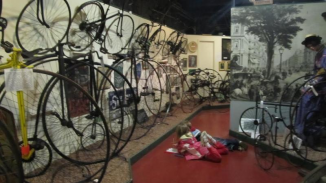
If your kid is crazy about bikes then the National Cycle Museum is the place for you! Discover the 200 year history of the bicycle through the museums cycle displays. See how their designs have changed and developed throughout the years through the collection of over 260 bicycles, from tandem bikes to Penny Farthings to tricycles. Learn about the most prestigious Olympic and world records for cycling, where and when they took place and the bikes they were achieved on. And don't forget to pick up a souvenir from your visit at the museum shop!
Get on your bike and get to the National Cycle Museum!
·Many items of cycling memorabilia
·Free fun quiz for children
·One of the world's leading cycle museums
2. Gigrin Farm:
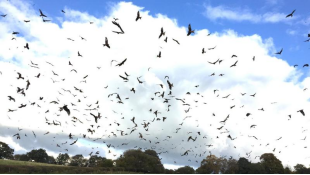
For a truly natural nature trip you can beat the thrills of the Gigrin Farm flocks! Use the five large hides (three of which are accessible to the disabled), you can visit here any day of the year and see Wild Red Kites, buzzards and ravens swarm in to the feeding station and compete for the choicest pickings with what the folks at Gigrin Farm call breathtaking feats of aerial piracy!
It's a fantastic experience whether from the perspective of the casual observer or for those who know their twitchy stuff, so kids and grown-ups can enjoy it equally but on differing levels. Including jackdaws and carrion crows too the numbers can get up to 600 birds, so by anyone's standards that's a busy dinner table!
Really interesting to watch, it's a bit more combative in the colder months (as it would be) so smaller children would probably enjoy it more in summer, but of course they're much keener to turn up at all when it's cold! Regardless, warn the kids how much noise the birds can make, as it might come as a bit of a shock otherwise!
Your admission covers access to the 5 standard hides but you can also access the extra hides for an additional fee including 1 dedicated disabled specialist photographic hide and 3 specialist photographic hides which comprise The Gateway, The Tower and The Big Tower, which offer even better views if you've got the pennies to spare.
3. Lion Royal Hotel Trekking:
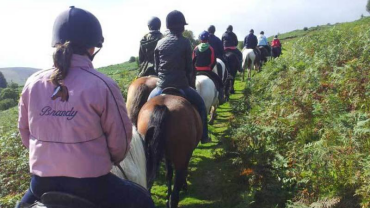
BHS approved Lion Royal Hotel Trekking offer a friendly welcome to join in their daily ride out from the farm every morning around 10:30am. You can just turn up and join in either with your own mount or by using one of their experienced ponies and horses which will be allocated to you with temperament and size in mind, based on your level of confidence and experience. Along with your helmet etc of course!
They take a different route each day exploring the local hills, valleys and woodlands surrounding the scenic rivers Elan and Wye, almost always off road though fairly evenly tracked.
The daughter of the owner is about 8 years old and usually goes along, this is helpful to know if your children lack confidence as seeing another youngster ride so capably often offers some reassurance and determination.
No other facilities offered except livery, it's not for lessons or day camps, you can't own a pony and there's no manage. What you can do it take a gentle romp in the semi wild with well mannered mounts and a friendly, experienced guide.
Reference Website:
https://www.dayoutwiththekids.co.uk/things-to-do/mid-wales/powys/llandrindod-wells
VI. History
During the mid-18th century, the 'healing qualities' of the local spring waters attracted visitors to the area resulting in an economic boom with the building of a 'splendid' hotel at Llandrindod Hall. A period of relative decline during the late 18th and early 19th centuries was reversed with the construction of the Heart of Wales line making Llandrindod accessible from south Wales, the Midlands and northwest England. Enclosure of the common in 1862 enabled the expansion of the town with the construction of new streets, hotels, shops and houses.
During the 'season' between May and mid-September, visitors would take the waters at the pump rooms at the Rock Park and Pump House Hotel, entertained by orchestras. Hotels, boarding houses and shops—including the Central Wales Emporium on the corner of Temple Street and Station Crescent—provided for the visitors. In the early 1870s, an ornamental lake was formed by draining marshland near the Pump House Hotel (on the current site of the Council offices), and in 1893 a 9-hole golf course was opened on the common beside the lake (later replaced by the present 18-hole course on the hills above). Horse races (and later air displays) were held on the Rock Ddole meadow beside the river.
In 1893 the archdeacon with responsibility for the area had Llandrindod old church and Cefnllys church unroofed in order to persuade the congregations to attend the new church in the centre of the town. In 1895 both churches were restored.
Llandrindod was the place of the election of the first Archbishop of Wales, which occurred at the Old Parish Church. Elections for every Archbishop since have continued to be held in Llandrindod, now at Holy Trinity Church in the Town Centre. In 1907, a Catholic church was founded in the town, Our Lady of Ransom and the Holy Souls Church.
The town has maintained an important profile in the world of motoring and motorsport. Apart from two of its most symbolic recent buildings being the Tom Norton's Automobile Palace and Pritchard's Garage, it served as the base for many International motorcycle events such as the International Six Days Trial ISDT starting in 1933 with the last visit taking place in 1961, often drawing in crowds of thousands to watch. The Welsh International Two Day Trial organised by locals is still a popular event as well as many rallies that rely on the infrastructure of Llandrindod's Hotels and public spaces.
The town's boom continued until the First World War during which time soldiers on training courses were billeted in hotels and boarding houses, and refugees and wounded soldiers were accommodated in the town. The depression of the late-1920s and 1930s led to many hotels and boarding houses being turned into private homes and flats. During the Second World War the town was again used for military hospitals and billets, followed by a slump in the post-war years. The Beeching Axe resulted in the closure in the mid-1960s of the Mid-Wales line and with it Llandrindod's connection from nearby Builth Wells direct to Cardiff and to north and west Wales. The town does retain connections to Swansea and Shrewsbury from Llandrindod railway station on the Heart of Wales line. The A483 road is the main route through the town.
Prior to 1974, the town housed much of the administration of Radnorshire, although the official county town was Presteigne. The reorganisation of local government in 1974 resulted in Llandrindod becoming the county town of the newly formed administrative county of Powys. This led to an influx of people employed by the new bureaucracies, on salaries determined by national pay scales. The new County Hall was based on Spa Road East in Llandrindod Wells.
In more recent years the economy has again flagged. The town's carpet and stationery factories closed. Many shops are either empty or occupied by charities. An open-air market is held once a week in the High Street Car Park. The town has larger business chains, including Tesco, Aldi, Spar, Greggs, Mica Hardware and a Post Office.
In a 2017 survey undertaken by Rightmove, Llandrindod was voted the Happiest Place in Wales.A survey by the Royal Mail over the Easter 2018 period showed that Llandrindod had the highest online shopping rates for that period in the whole of the country.
VII. Culture
Many locals and some visitors dress in Victorian, Edwardian or other antique costumes, and many of the town's shops and other high-street businesses dress their windows or otherwise join in the spirit of the event. The festival typically offers open-air and street theatre and music, a fairground, a craft fair, an historical re-enactment, entertainments at the Albert Hall and exhibitions of "things old-time". For 2015 and 2016 this grew into a weekend steampunk festival, first as part of the Victorian festival and then as an independent event, however, did not return in 2017.
The town hosts annual Welsh 2 Day Enduro in June. This attracts motorbike riders from all over the UK and brings much tourism to the town.
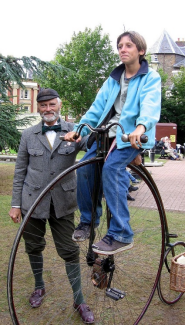
There is a wide range of entertainment available in the town each year. The Albert Hall Theatre is a Victorian Theatre owned by the community of Llandrindod. The Theatre is run by a group of volunteers and are beginning to host a range of events, suitable for all. Llandrindod Wells Theatre Company host their annual Pantomime and Summer Season Shows at the Albert Hall. Pavilion Mid Wales (formerly known as The Grand Pavilion) brings a wide range of entertainment to the town. Radnor Fringe Festival was an annual free festival held within the Rock Park. Three days of Live Music, Comedy, Spoken Word, Dance, Children and Family Activities, Traders and much more. The festival originally ran alongside the already established Victorian Festival, however, it was decided to move the festival to its own weekend, and has gathered momentum and popularity in so doing. The festival is not planned to return for 2019.
VIII. Other information
Llandrindod has two primary schools and one secondary school. Llandrindod Wells CP School - Cefnllys (Ysgol Cefnllys) is an English Medium Local Authority Primary school. Llandrindod Wells Church in Wales School - Ysgol Trefonnen is an English and Welsh Medium Local Authority Primary School.
Ysgol Calon Cymru is the town's Local Authority secondary school. The school has two campuses, which replaced the former Llandrindod High School (and Builth Wells High School) and opened in September 2018. The Llandrindod site provides an English-medium education for 11 to 18 year olds.
The gold in the county coat of arms symbolises the wealth of the area. Black is for both mining and the Black Mountains. The fountain is a medieval heraldic charge displayed as a roundel barry wavy Argent and Azure. It represents water and refers to both the water catchment area and the rivers and lakes. Thus, the arms contain references to the hills and mountains, rivers and lakes, water supply and industry. The crest continues the colouring of the arms. A tower has been used in preference to a mural crown, which alludes to the county's military history and remains. From the tower rises a red kite, a bird almost extinct elsewhere in Britain but thriving in Powys. The bird is a "semé of black lozenges" for the former coal mining industry while the golden fleece it carries is a reference to the importance of sheep rearing in the county.
IX. Contact information
Mayor/Officer: Steve Deeks-D'Silva
Tel: 01597 826870
Mail: llandrindod.library@powys.gov.uk
Reference Website:
https://en.wikipedia.org/wiki/Llandrindod_Wells#Governance
https://en.powys.gov.uk/article/1214/Llandrindod-Wells-Library-Contacts
